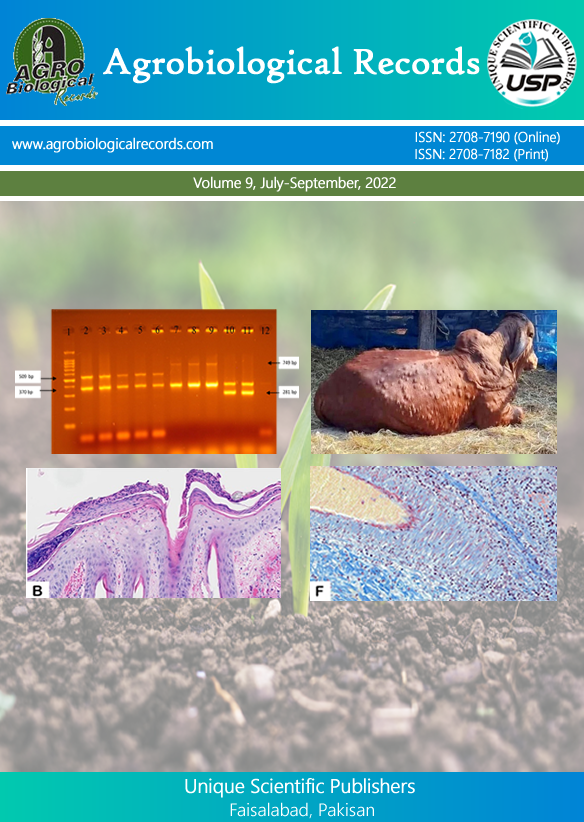
Tauseef-ur-Rehman 1*, Zohaib Saeed 2, Muhammad Arfan Zaman 3, Arbab Sikandar 3 and Hafiz Muhammad Ali 1
1Department of Parasitology, Faculty of Veterinary and Animal Sciences, The Islamia University of Bahawalpur, Bahawalpur -63100, Pakistan; 2Department of Parasitology, University of Agriculture, Faisalabad, Pakistan 3College of Veterinary and Animal Sciences, Jhang, Pakistan
*Corresponding author: drtauseef@iub.edu.pk
A cross-sectional study was planned to determine the prevalence rate of Eimeria (E.) leuckarti in horses and factors influencing its occurrence in district TT Singh, Punjab, Pakistan. From April 2009 to March 2010, 484 equine feces were collected and adopted a two-stage cluster method for random selection of horses. Samples were subjected to the quantitative floatation method. Found 50.41% of sampled horses were positive for E. leuckarti, with prevalence reaching its peak in August (OR=1.156; ?2=20.055). The lowest occurrence was recorded in April, May, and June, coinciding with the lowest humidity and precipitation of the year in Pakistan. It can be inferred from these observations that the wet season seems to be favorable for the propagation of this disease. Foals (124/197; 62.94%; OR=0.422; ?2=20.825) were found to be more susceptible (P<0.05) to E. leuckarti in comparison to adults (120/287; 41.81%) while mares with the prevalence of 56.48% (196/347; OR=0.512; ?2=13.265) were found to be more susceptible (P<0.05) as compared to and male horses (48/137; 35.04%). Horses kept on the non-cemented floor, mixed farming with other animals, given food on the ground, and watered in ponds/common places were found to have higher rates of prevalence of E. leuckarti (P<0.05) in comparison to those kept on cemented/partially cemented floor, separate farming, food in the trough and tap water, respectively. It is inferred from the findings of this survey that disease can be controlled by improving management systems.